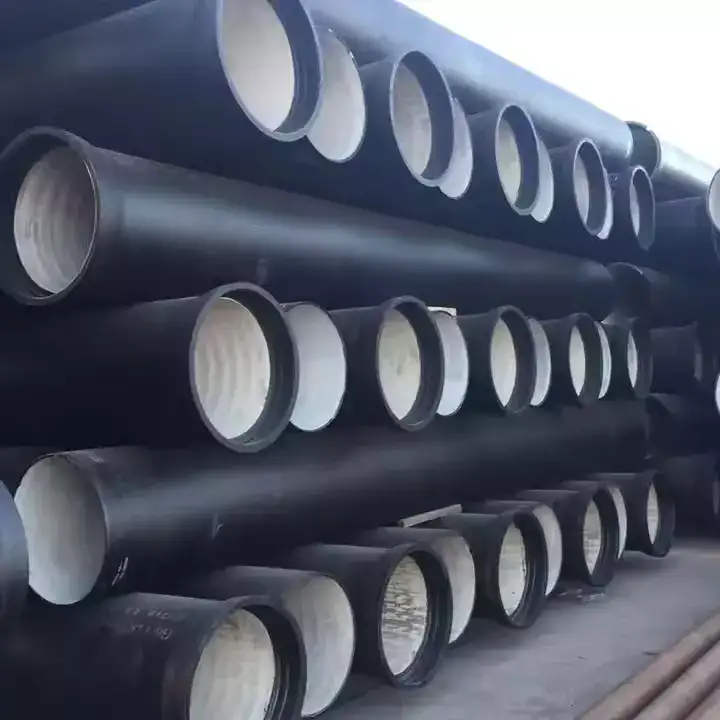Ductile iron pipes have long been a staple in water distribution systems due to their strength and durability. However, as infrastructure ages, the need for efficient and minimally disruptive replacement methods becomes paramount. Pipe bursting, a trenchless technology, offers a potential solution. But can it be applied to ductile iron pipes? This article delves into the intricacies of using pipe bursting on ductile iron pipes, examining its feasibility, challenges, and best practices.

🔍 Understanding Pipe Bursting
Pipe bursting is a trenchless method used to replace old or damaged pipes by fracturing the existing pipe and simultaneously pulling in a new one. This technique minimizes surface disruption, making it ideal for urban areas or locations with limited access.
Types of Pipe Bursting Methods
-
Pneumatic Bursting: Utilizes a bursting head propelled by compressed air.
-
Hydraulic Bursting: Employs hydraulic force to expand the bursting head.
-
Static Pull Bursting: Involves a continuous pulling force to fracture the pipe.
🛠️ Feasibility of Pipe Bursting on Ductile Iron Pipes
Ductile iron pipes are known for their strength and resistance to corrosion. However, their brittleness can pose challenges when attempting to burst them.
Factors Influencing Feasibility
-
Pipe Condition: Corroded or weakened pipes may be more susceptible to bursting.
-
Pipe Diameter: Larger diameters may require more force and specialized equipment.
-
Surrounding Environment: Presence of other utilities or structures can impact the bursting process.
⚠️ Challenges in Bursting Ductile Iron Pipes
While pipe bursting offers numerous benefits, applying it to ductile iron pipes presents specific challenges:
-
Pipe Brittleness: Ductile iron’s brittleness can lead to incomplete fracturing or equipment damage.
-
Ground Movement: The force exerted during bursting can cause unintended ground displacement, potentially damaging adjacent structures.
-
Obstructions: Existing fittings or other utilities can obstruct the bursting process.
✅ Best Practices for Bursting Ductile Iron Pipes
To enhance the success rate of bursting ductile iron pipes, consider the following best practices:
-
Pre-Inspection: Conduct thorough inspections to assess the pipe’s condition and identify potential obstacles.
-
Use of Appropriate Equipment: Select bursting heads and equipment tailored for ductile iron’s properties.
-
Controlled Bursting: Implement gradual and controlled bursting techniques to minimize ground movement.
-
Post-Burst Inspection: After bursting, inspect the new pipe installation to ensure integrity and proper alignment.
📊 Comparison: Pipe Bursting vs. Traditional Replacement
| Aspect | Pipe Bursting | Traditional Replacement |
|---|---|---|
| Disruption | Minimal | High |
| Time Efficiency | High | Moderate to Low |
| Cost | Moderate to High | High |
| Suitability for Ductile Iron | Moderate to High | High |
| Equipment Requirement | Specialized | Standard |
❓ Frequently Asked Questions (FAQs)
1. Can ductile iron pipes be burst?
Yes, ductile iron pipes can be burst, but their brittleness requires specialized equipment and techniques to ensure successful replacement.
2. What are the risks associated with bursting ductile iron pipes?
Risks include incomplete fracturing, equipment damage, and unintended ground displacement affecting adjacent structures.
3. How can the success rate of bursting ductile iron pipes be improved?
Implementing best practices such as thorough pre-inspection, using appropriate equipment, controlled bursting techniques, and post-burst inspections can enhance success rates.
4. Is pipe bursting more cost-effective than traditional replacement methods?
Pipe bursting can be more cost-effective due to reduced labor and restoration costs, but the initial equipment investment may be higher.
5. What factors influence the feasibility of bursting ductile iron pipes?
Factors include the pipe’s condition, diameter, and the surrounding environment, such as the presence of other utilities or structures.
6. Are there alternative methods to replace ductile iron pipes?
Yes, methods like sliplining and open-cut trenching are alternatives, each with its own set of advantages and challenges.
📹 Related Video
For a visual demonstration on replacing ductile iron pipes using pipe bursting methods, watch the following video:
References:
- U.S. EPA – Trenchless Technology: Pipe Bursting Overview
- ASTM F2831-10 – Standard Practice for Internal Nonstructural Spot Repair of Non-Potable Gravity Pipes Using a Resin-Impregnated Fabric Tube
- NASSCO – Pipe Bursting for Trenchless Rehabilitation
- Wikipedia – Pipe Bursting
- TT Technologies – Pipe Bursting: Trenchless Replacement of Underground Pipes
